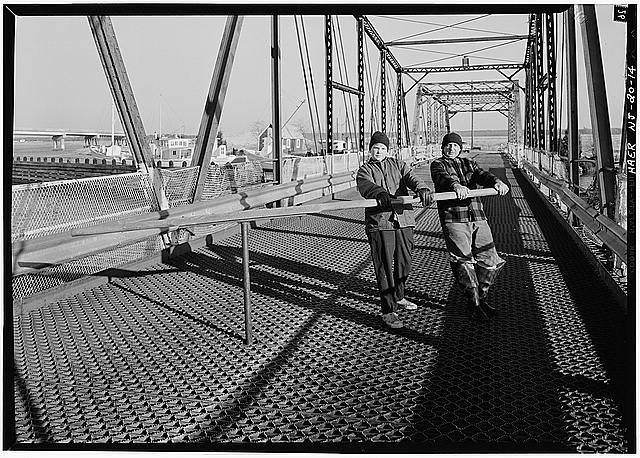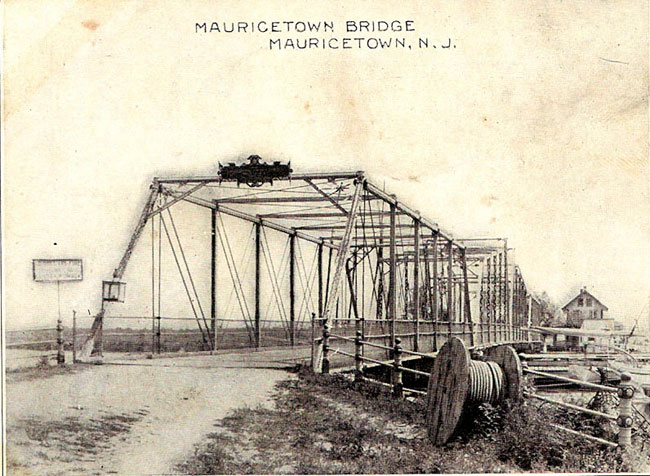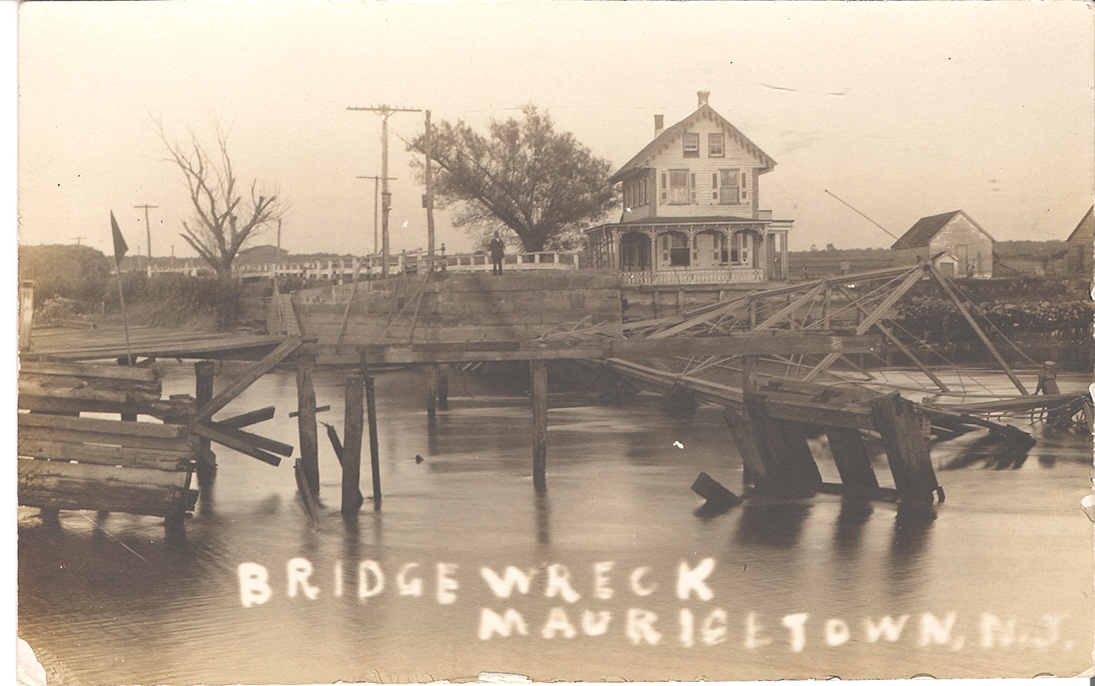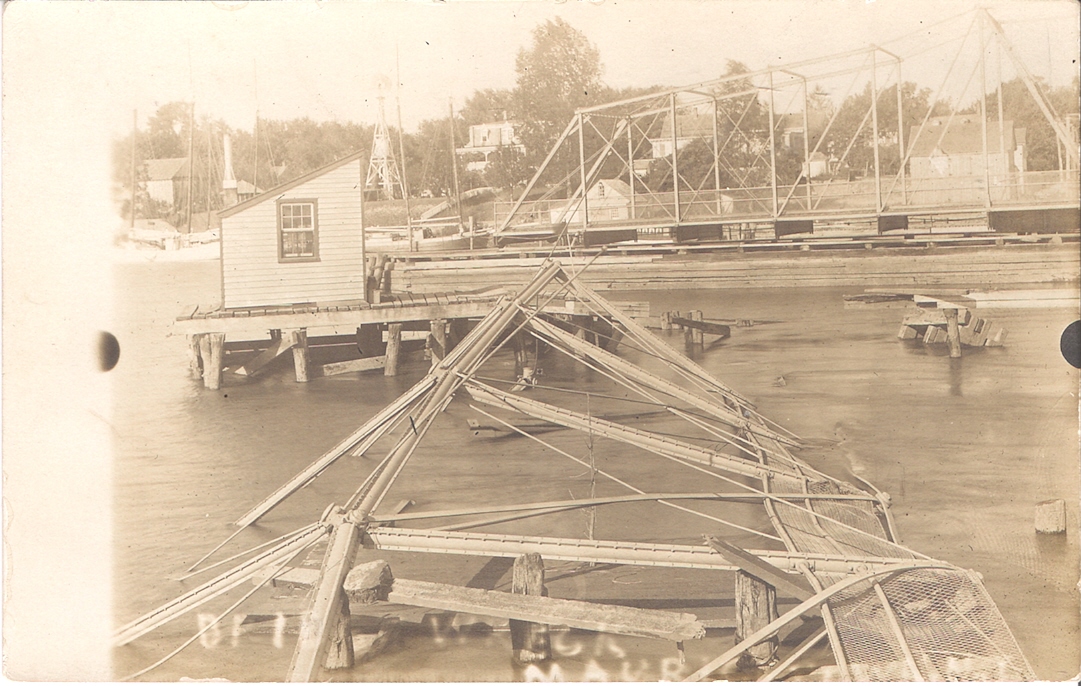|
Maurice River Recollections Project
River Reaches
The Maurice River Reaches Project
Bridges: The Future with a Past - Part I There's not even a shadow of a ghost town to remember the Maurice River community of "Stratton Burrough" and the bridge that was planned to bring it to prosperity. In 1793, a Methodist preacher, Fithian Stratton, purchased the tract of land near the confluence of Menantico Creek and Maurice River, just one mile below where the railroad crosses the stream. Stratton plotted out the borough and gave it his name. By 1800, Stratton drew up plans for a bridge over the Maurice River, connecting to a direct road to Bridgeton. Historian Lucius Elmer wrote that Stratton had hoped to "get ahead of Millville," where development led to its official establishment in 1801. Even though a dozen houses had been constructed in Stratton Burrough, and a road from Millville to Port Elizabeth brought travelers and tradesmen through the area, By 1820, a new road by-passed Stratton's settlement. According to map collector Charles Hartman, a new name for the locale, Schooner Landing, showed up on surveys as early as 1831. By the early 1900's, traffic traveled through the area on a gravel road that led from Millville to Port Elizabeth, skirting Schooner Landing. Eventually a geared bridge was added, the road was improved and the throughway became a stretch of the state highway known as the Delaware-to-the-Sea or Delsea Drive. Today, the state's super highway, Route 55, exits at Schooner Landing Road, in the shadows of Stratton Borrough, the village that has faded into oblivion. Mauricetown Bridge The Library of Congress has created an archive to help preserve colorful and informative slices of history that might fade away like this little Maurice River town. In fact, the history of one Maurice River crossing is preserved in the Library of Congress American Folklife Project. In that collection, the "Old Iron Bridge of Mauricetown" is documented in a series of 20 photographs. An "Historic American Engineering Record" identifies the span as the Maurice River Pratt-Terough-Truss Swing Bridge.
The expense of maintaining that wooden span, and the cost of its replacement a decade later, led to a proposal for the erection of the iron bridge in 1886. In 1888, construction began on a 165-foot iron bridge with a swing span that was "wide enough for two teams to pass and with a minimum horizontal clearance of 60 feet for boats." (Untitled news article, 4/3/1972). Mauricetown's Iron Bridge was completed in 1889, 75 years after the Compton brothers established the village of Mauricetown and a century after the location was a ferry crossing known as Mattox Landing.
On September 2nd, 1909, The Cumberland County Board of Chosen Freeholders met in Mauricetown to discover the extent of the bridge�s damage. Following the inspection, the Freeholders planned a series of meetings in order to replace the wrecked bridge. They eventually gave the contract to the Owego Bridge Company of New York State, who offered to complete the project for $9,590.
Before work on the new bridge could start, however, the Army Corps of Engineers held a hearing based on complaints from shippers. The hearing, which took place on January 20th, 1910, was based on complaints was that the clear channel between the swing span was not wide enough for boats to safely pass through. Although Cumberland County won the suit, they were ordered to spend an extra $3000 to buy a fendering system. Because of this, the bridge was not completed until November, 1910. In 1912, Cumberland County won another lawsuit, this one against Paxson. The company was forced to pay almost $9800 in damages for the previously wrecked bridge. As early as 1964, there were discussions to erect a new bridge to replace the historic Iron Bridge, but it wasn't until March 1971 that work on the modern 1385-foot span was started. One interesting news article (Philadelphia Inquirer, March 21, 1971) titled "Cumberland's Lonesome Span Stuck in the Mud," reported that the delays that plagued the construction could be blamed on "that famous lower Cumberland County black mud, 50 feet deep in places, sediment from the salt marshes that old-timers claim would swallow up horses and people without a trace." Local residents Ralph DiPalma and his partner Lou Miller were consulted at one point during the bridge building. DiPalma and Miller owned the oysterboat, the Lindbergh, at the time. DiPalma recalled that they got a letter asking how high the Lindbergh's mast was. "We were the only ones with a mast that high," he said, explaining that it measured about 25 feet. "And that determined how high the new bridge was going to have to be." In her research of the Maurice River, Citizens United President Jane Morton Galetto discovered that the bridge was designed with a section that could be converted into a drawbridge if the need arose. Despite the delays, the bridge was completed. The first boater to pass under the new span was another local resident, Russell Burcham, piloting his cruiser Concordia. In a subsequent news article (April 1972) it was reported that this bridge was the "the longest, highest and most costly bridge" of the 170 bridges under the jurisdiction of the Cumberland County Board of Freeholders. As it approaches its 40th anniversary, the Mauricetown Bridge remains one of only two crossings over the Maurice River. Credits: Barsotti, Debra - Research Journalist
|
Bridges
|



